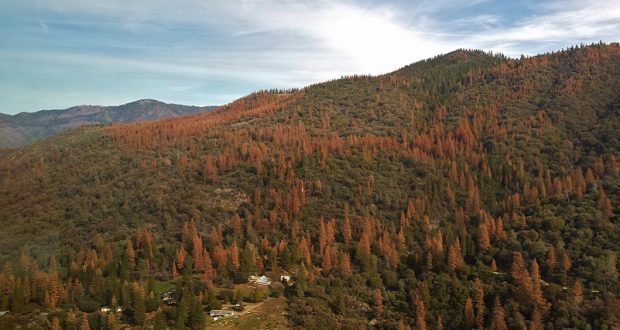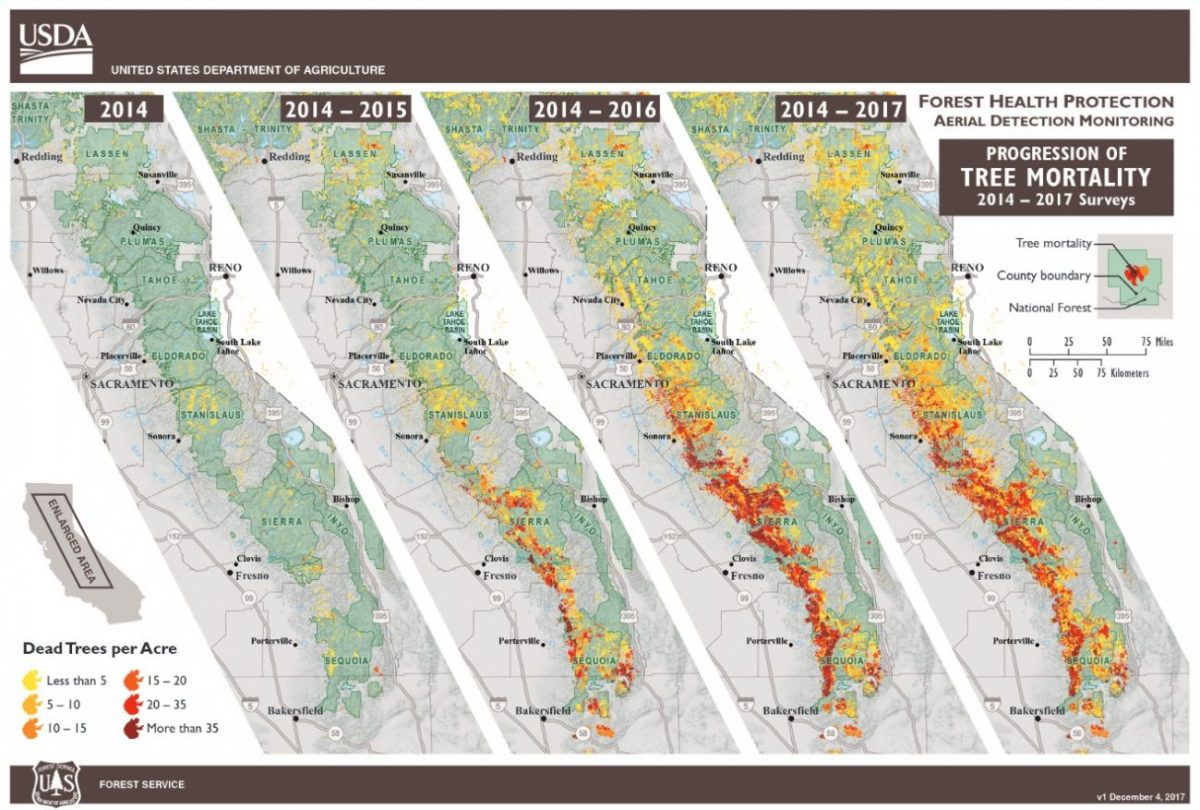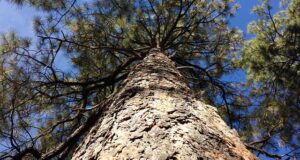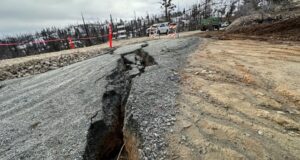VALLEJO – The U.S. Forest Service has announced that an additional 27 million trees, mostly conifers, died throughout California since November 2016, bringing the total number of trees that have died due to drought and bark beetles to an historic 129 million on 8.9 million acres.
These dead trees continue to pose a hazard to people and critical infrastructure, mostly centered on the central and southern Sierra Nevada region of the state. (See mortality progression map below).
As the tree mortality crisis continues, the Forest Service struggles with ways to fund massive firefighting efforts while still carrying out their non-fire mission.
“The number of dead and dying trees has continued to rise, along with the risks to communities and firefighters if a wildfire breaks out in these areas,” said Randy Moore, Regional Forester of the U.S. Forest Service, Pacific Southwest Region.
“It is apparent from our survey flights this year that California’s trees have not yet recovered from the drought, and remain vulnerable to beetle attacks and increased wildfire threat. The Forest Service will continue to focus on mitigating hazard trees and thinning overly dense forests so they are healthier and better able to survive stressors like this in the future.”
Moore says that to increase the pace and scale of this important work, the Forest Service will need to fix how fire suppression is funded.
“Last year fire management alone consumed 56 percent of the Forest Service’s national budget,” he says. “As fire suppression costs continue to grow as a percentage of the Forest Service’s budget, funding is shrinking for non-fire programs that protect watersheds and restore forests, making them more resilient to wildfire and drought.”
Though California received record-breaking rains in the winter of 2016-2017, the effects of five consecutive years of severe drought in California, a dramatic rise in bark beetle infestation and rising temperatures have led to historic levels of tree die-off.
The Tree Mortality Task Force (TMTF), with support from the Governor’s office and comprised of more than 80 local, state and federal agencies and private utility companies, continues to remove hazardous dead trees. To date, the TMTF members have collectively felled or removed over 860,000 dead trees; this includes over 480,000 dead trees felled or removed by the U.S. Forest Service.
The Forest Service says the TMTF members are using a triage approach to this tree mortality crisis, first focusing on public safety by removing dead and dying trees in high hazard areas.
“To further improve forest health, the U.S Forest Service and Cal Fire have increased their pace and scale of prescribed fire. The U.S. Forest Service has treated over 55,000 acres and Cal Fire has completed over 33,000 acres in fuel treatment projects. By combining tree removal with prescribed fire, crews will be able to decrease overly dense stands of trees, reduce greenhouse gases, and protect communities across the state.”
“Tree mortality at this magnitude takes on-going cooperation between public, non-profit and private entities,” said Chief Ken Pimlott, Cal Fire director and California’s state forester.
With record breaking levels of tree die-off, the TMTF says they are using this event as an opportunity to collaborate on several fronts: from public workshops about reforestation, public outreach in urban and rural areas, and awarding over $21 million in grants aimed to protect watersheds, remove dead trees and restore the forests.
“The Tree Mortality Task force has provided an essential venue for coordination of response efforts, exchange of ideas, reporting, and accountability for the ongoing statewide response to this incident,” said Supervisor Nathan Magsig of Fresno County. “Monthly coordination of the 10 most impacted counties has resulted in a more effective use of resources and has allowed counties to share ideas and successes.”
With a staggering 129 million dead trees in the state, the Forest Service says the work of the task force is far from over.
“The strong foundation built will continue to be an advantage as the TMTF continues to address tree mortality and its impacts.”
Learn more about tree mortality and the work to restore our forests in California at the Forest Service’s web page Our Changing Forests.
To learn about how to be prepare and protect your home against wildfire and bark beetles visit Cal Fire’s web page Ready for Wildfire.
For more information on tree mortality in California, click here.





